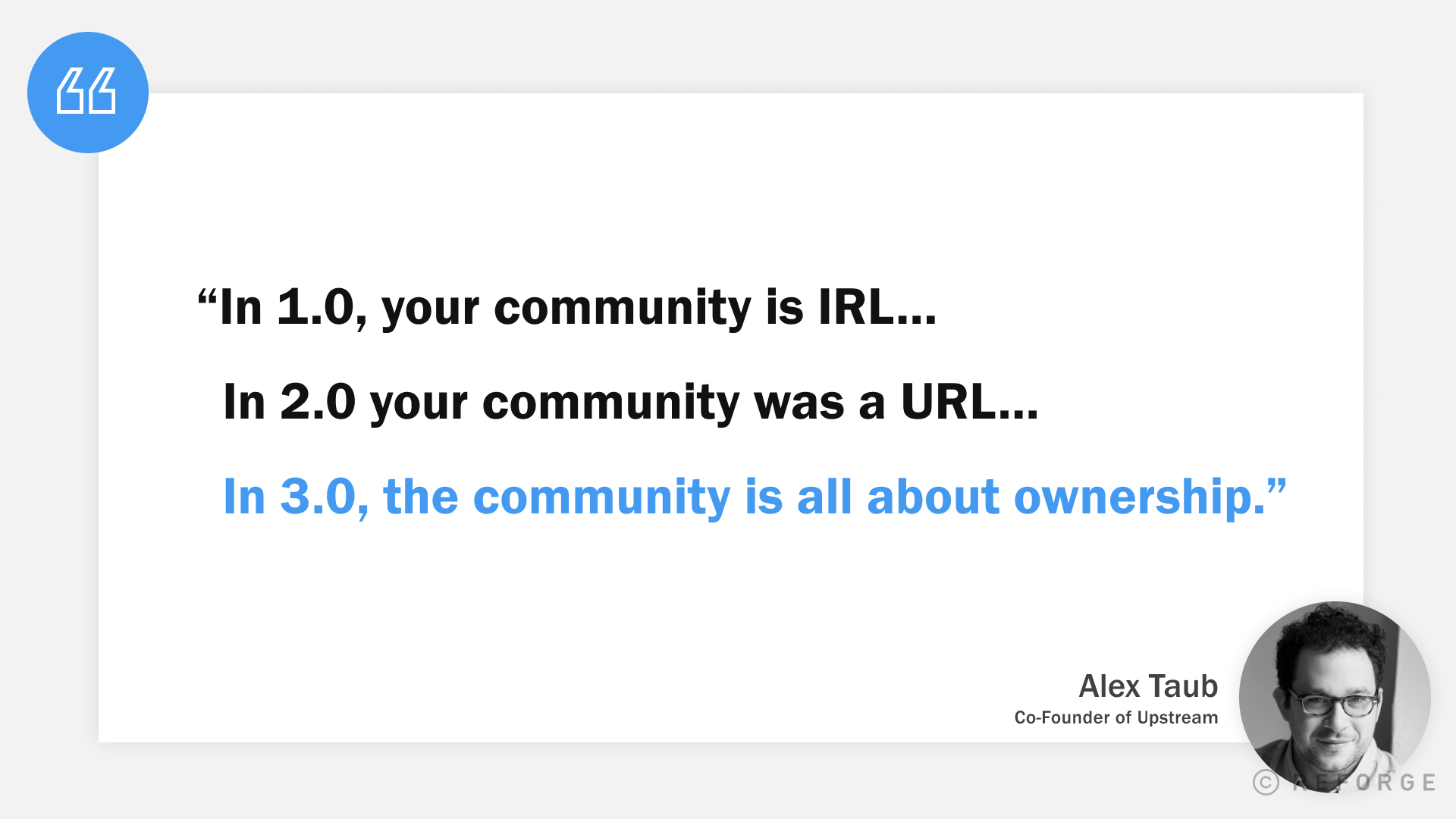A Beginner's Guide To Web3
Learn the difference between Web1, Web2, and Web3, understand Web3 in cryptocurrency, and identify the top Web3 cryptocurrencies.

The internet has had an impact on the way we interact, conduct business, and get information. The growth of our society is heavily influenced by technology.
The web is undergoing a significant disruption due to the development of blockchain technology and other technologies.
One of these technologies is Web 3.0.
Here's the thing, It's not easy to navigate Web3. Getting started with blockchains, cryptocurrencies, NFTs, and DeFi can be challenging.
To better understand web3, we should first know how we got here. What is the meaning of Web1? What led to Web1 becoming Web2, and how did it provide the framework for Web3?
You'll get to know the difference between Web1, Web2, and Web3, understand Web3 in cryptocurrency and identify the top Web3 cryptocurrencies. You'll also get to know the pros and cons of Web3.
Web1, Web2, and Web3
Web1
While many believe the internet was invented in 1983, Tim Berners-Lee developed concepts such as HTML, HTTP, URLs, and web browsers in the early 1990s that led to the web as we know it today.
The "read-only" period of the internet, from that time to the early 2000s, is referred to as "web1." This is because early websites were basic and static and did not allow users to interact with them. Businesses use their websites as informational storefronts for their customers.
Example of Web1:

Web2
It is typically believed that Web2 began at the end of web1 and continues to the present day, regardless of whether there is a single, agreed-upon date. This was when "read-only" on the web changed to "read and write." Web2 allowed users to create content as well as consume it.
Social media platforms emerged as websites began to feature online reviews and other features that enabled content sharing and user interaction.
The first social media platforms like MySpace and Bebo allowed users to host photographs and connect with friends, unlike later platforms that offer so much more than that, such as Facebook, Instagram, and Twitter, which have appeared to dominate the web and developed to provide various services.
When they first started, MySpace and Bebo only offered social networking services, unlike the news ones like Facebook, Instagram, and Twitter, which provide ad features, microblogging, and even selling.
Through web technologies like HTML5 and Javascript frameworks like ReactJs, companies can create new concepts that let people contribute more to the Social Web. In Web 2.0, developers only need to create a system that enables and engages users.
Web3
We now arrive at Web3. Web 3.0, also known as Semantic Web or read-write-execute, began in 2010 and signals the future of the internet. Machine learning (ML) and artificial intelligence (AI) allow computers to analyze data similarly to humans, enabling the intelligent creation and dissemination of information tailored to the individual's needs.
The blockchain's new, divisive evolution aims to decentralize the current internet. Blockchain is crucial to the Web 3.0 evolution and the ability to run smart programs and achieve near-human intelligence on the internet.
Despite some fundamental differences, both Web 2.0 and Web 3.0 emphasize decentralization. Most Web 3.0 applications are developed and distributed using a single database (typically hosted by a single cloud provider) and a single server.
A web3 environment can deprive distributors, governments, and banks of their authority and instead place artists, communities, and retail investors at the center of its ecosystem.
Upstream's co-founder Alex Taub summarizes it this way:

Understanding Web3 in Cryptocurrency
You'll notice that you frequently encounter cryptocurrency when discussing Web 3.0. This is because blockchain technology and cryptocurrencies are the foundation of Web3 architecture.
Cryptocurrencies are required to keep Web3 decentralized and ensure that all stakeholders are given the correct incentives. Moreover, Web3 protocols have a firm reliance on cryptocurrencies.
Those who participate in the development, administration, contribution, or improvement of one of the projects will receive financial incentives (tokens). "Web 3.0 tokens" refer to digital assets striving to build a decentralized internet.
In addition to hosting, computing, bandwidth, storage, identity, and other internet services previously provided by cloud providers, these protocols may offer various services.
These protocol services include Decentralized Finance, privacy and digital infrastructure, blockchain Games, and Metaverse.
The protocol offers a variety of technical and non-technical alternatives for people to make a living. Protocol users often pay to use the service, similarly to cloud providers like Amazon Web Services. The elimination of unnecessary and frequently wasteful intermediates is a common feature of decentralization.
Top Web 3.0 Cryptocurrencies
Audius
With its native token, AUDIO, Audius, a decentralized music streaming service, unites the interests of musicians, fans, and node operators. You can utilize the coin for governance, staking, and rewarding artists' income. By including their music in the weekly hot lists, Audius also honors the work of its creators. One of the top Web 3.0 cryptocurrencies, it will eventually replace Bitcoin.
Chainlink
A blockchain abstraction layer called LINK makes it possible for smart contracts to be globally connected. It offers the perfect blend of a project with the appropriate technology supporting it and adequate resources for further development. The best feature is Chainlink's top-notch neighborhood. One of the top Web 3.0 cryptocurrencies, it will eventually replace Bitcoin.
Filecoin (FIL)
A blockchain-based cooperative digital storage and data retrieval system, Filecoin is an open-source, public cryptocurrency and digital payment system. It is created by Protocol Labs and is based on the InterPlanetary File System. It enables users to rent out idle, hard drive space.
Flux
The goal of Flux is to lay the foundation for the developers to construct this future version of the web. Users can create Web 3.0 projects and decentralized applications with Flux's assistance, then deploy them over numerous networks. With the aid of FluxOS, a decentralized operating system designed just for Flux users, this becomes very effective. Along with SaaS, it also provides blockchain-as-a-service (BaaS).
Helium
A global network of low-energy wireless hotspots is used by Helium, a decentralized blockchain-powered IoT network, to broadcast data through radio waves that will be stored in the blockchain. The network checks that the hotspots offer reliable wireless service using a novel mechanism called the proof-of-coverage consensus.
Kadena
The only scalable layer-1 Proof of Work (PoW) blockchain in the market is Kadena. Scalability, which enables Kadena to deliver infrastructure-grade performance for any blockchain project, is the main element that propels Kadena. Kadena's platform offers the world the tools and atmosphere to convert ideas and aspirations into reality, together with our proprietary smart contract language Pact.
Kusama
As Kusama has proven success with parachains, investing in it is similar to taking a side trip via Polkadot. As with DOT, developers compete for a seat on the Kusama network through parachain auctions. Experts believe Kusama is a good short-term investment because of its age and strength.
Livepeer
Livepeer is a decentralized video streaming network created using the Ethereum blockchain. Numerous participants in the streaming ecosystem can take part in it safely and economically. In addition to distributing real-time video, it promotes network participation.
Theta
With the help of its users, Theta hopes to become the next-generation entertainment and video platform. With enterprise validator nodes from Sony, Google, Samsung, and other companies, it intends to simplify the transmission of decentralized video to customers. One of the top Web 3.0 cryptocurrencies, it will eventually replace Bitcoin.
ZCash (ZEC)
When compared to other cryptocurrencies like Bitcoin, Zcash is a cryptocurrency that uses cryptography to give its users greater anonymity. The programming basis for Zcash is that of Bitcoin. The two have parallels, like the 21 million units fixed total supply.
Web 3.0 Pros and Cons
Advantages
- End users will gain the most from data encryption regarding data security.
- The information will be made available on any device and from any location.
- Thanks to decentralized data storage, users can access data in any circumstance. Users will receive numerous backups to help them in the event that the server fails.
- Since non-profit organizations create the majority of blockchain systems, there is an open-source blockchain platform that enables collaborative design and development.
- Problem-solving and labor-intensive knowledge-generation tasks benefit from Web 3.0.
Disadvantages
- To make the technology accessible to more individuals throughout the world, there is a need to improve the technology in terms of capabilities and quality.
- Web 3.0 has made accessing a user's information easier and has reduced privacy, making reputation management more crucial than ever.
- Once the adoption of web 3.0 is complete on the internet, any websites created using web 1.0 technology would be rendered outdated.
- Web 3.0 technology is more sophisticated, effective, and accessible than earlier iterations. The technology isn't nearly ready for widespread usage, though.
Conclusion
There is no stopping the growth of Web3. Although it is not new, it is just recently that it is becoming widely known.
Despite not being a new/novel concept, it is still new to most people. Web3 offers a growing number of employment opportunities every day. Furthermore, there is a high demand for web3 developers, blockchain developers, and other web3-related positions. There are a lot of opportunities and jobs available in Web3, and it will continue to grow.
Sometimes the path through Web3 can be challenging. Understanding some difficult concepts and technologies can be challenging, but you will succeed if you have a strong foundation.
There is just so much promise for the future of Web3 as advocates envision a future in which we don't have to give our personal information to companies like Facebook and Google to access their services. A blockchain-powered web would be powered by artificial intelligence and blockchain technology, with information published on the public ledger.
If you wish to learn more about web3 and how it works, you can check out these articles:
- What Is Web3 and How Will it Work?
- What Is Web3 All About? An Easy Explanation With Examples
- What is Web 3.0? A deep dive
Related Articles
- Decentralized Finance (DeFi): A Definitive Guide
- What Are Smart Contracts in Blockchain and How Do They Work?
- Top 15 Blockchain Courses in India